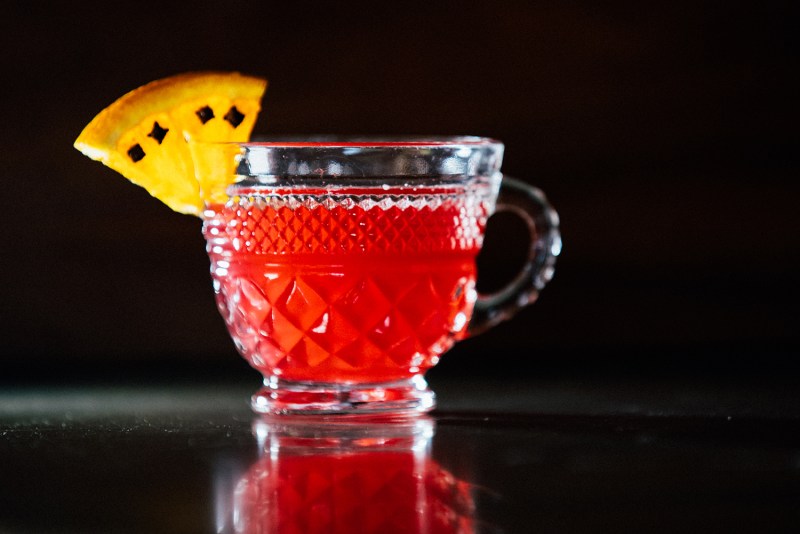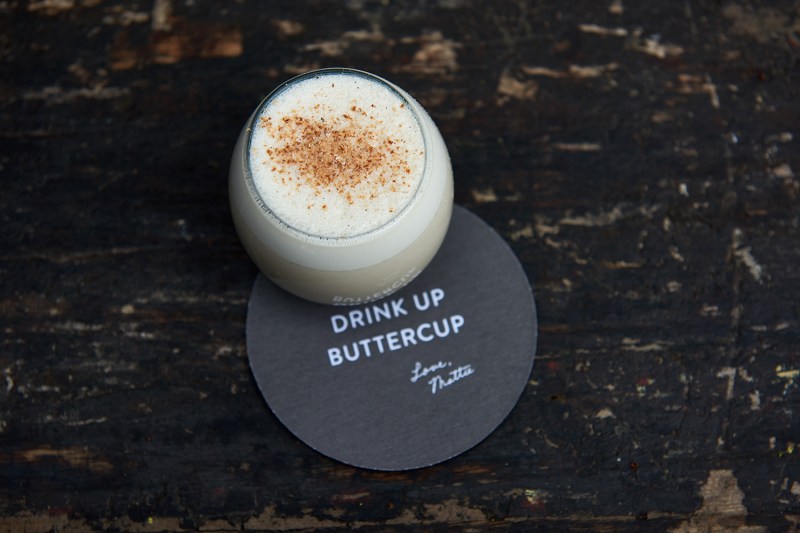One of the oldest drinks around, Milk Punch is a lot like it sounds. The dairy-centric drink mixes up fresh milk, sugar, vanilla, and a spirit — most commonly bourbon, brandy, or a bit of rum or vodka. But there’s much more to the age-old classic.
Related Reading
Milk Punch dates back to the 1600s in Scotland. By 1711, it had officially been documented in a published cookbook. By the latter half of that century, people like Benjamin Franklin were enjoying the drink. In those days, it was often served hot, as refrigeration was not a real option and producers were still figuring out how to properly stabilize and bottle milk.
Since, the drink has mostly gone the served cold route and forked into two main categories. The first, ever-popular in New Orleans and much of the South, is typically made with bourbon and heavier dairy like milk or cream. The second, sometimes called English Milk Punch, is its clarified cousin. This style is heated early on in order to curdle and strain out much of the thicker proteins. What’s ultimately poured into the glass is a lighter and see-through version of the cocktail, typically served over ice.
The former is decidedly more cold weather and holiday appropriate. The latter, however, is delicious year round, although it takes a little more work to get things clarified. Do your prep work beforehand and store things briefly in the fridge if necessary. We’ve included recipes for both styles, below.

Clarifying sounds harder to do than it actually is. Sure, you can get super scientific and do it with things like centrifuges and vacuum filters, but why not keep things relatively easy? We suggest the tried and true method of heat and filtration. A simple stovetop and some coffee filters or cheese cloth is all you really need, in addition to the asks of the cocktail recipe itself. When properly done, you can end up with everything from a gin-clear Milk Punch to one that shows many colors of the other ingredients, without the cloudiness.
A very important aspect of the drink is temperature, as is often the case when working with dairy. As mentioned in Cocktail Codex, a fantastic cocktail book, the drink in question “should be constructed in a way that it’s served at the ideal temperature.” Because we’re shooting for cold here, chill you drinking vessels beforehand. And don’t forget about the amount of liquid you’re dealing with. Keep pours small so that there’s not much opportunity for the frosty drink to warm up any.
With a host of milk options at your local grocery store, you’re advised to play around a bit with the dairy base. Try a nuttier almond milk when whipping up a punch, or even oat milk. Options like rice milk and kefir can change the drink, too, often in healthier ways. Some even turn the drink on its head with ingredients like mango milk or coconut milk. Buckle up and have some fun.
1965 Milk Punch
This tasty riff from Jason Stevens of Mattie’s in Austin is a vintage take on what so many on the Gulf Coast like to sip. You can lighten it up by plugging in a lower-far milk and feel free to play around with other complementary additions, like Earl Grey tea or coconut.

- 4 oz bourbon (Stevens prefers Buffalo Trace)
- 3 oz Cognac (Stevens prefers Pierre Ferrand 1840)
- 2 oz crème de cacao (Stevens prefers Tempus Fugit)
- 1.5 oz Jamaican rum (Stevens prefers Appleton Reserve)
- 16 oz half-and-half
- 8 oz whole milk
- 2.5 oz grade A or B maple syrup
- 1 oz vanilla paste
Method: Combine all ingredients in a punch bowl and stir vigorously to make sure the vanilla is fully dispersed in the mix, then chill until very cold. Dispense milk punch into small chilled cups and garnish each cup with freshly grated nutmeg.
Clarified Milk Punch
Like so many clarified recipes, this Bon Appétit version is a little deceptive. Drinkers usually expect something thick and murky and end up with the opposite, while still retaining all the flavor. Pro tip: Make the punch base beforehand, as it can refrigerate for up to a week.
Base Ingredients:
- 3 cups brewed black tea
- 3 cups fresh lemon juice
- 3 cups fresh orange juice
- 1 cup simple syrup
- 1 cup vodka
- 3 cups whole milk
- 1.5 oz vodka
- 2 oz milk punch
Punch Base
- Combine tea, lemon juice, orange juice, simple syrup, and vodka in a large pitcher.
- Bring milk to a bare simmer in a medium saucepan. Immediately pour milk into vodka mixture (milk will curdle right away). Cover and chill at least 1 hour and up to 24 hours.
- Strain mixture through a fine-mesh sieve lined with cheesecloth into a large bowl. Cover and chill until cold (any remaining curds should settle at the bottom of the pitcher).
- Carefully ladle clarified punch into a clean pitcher, leaving any remaining curds behind. Chill until ready to serve.
Method: For each cocktail, combine vodka and 2 oz. milk punch base in a cocktail shaker and fill shaker with ice. Shake until outside of shaker is frosty, about 30 seconds. Strain into a rocks glass filled with ice.


